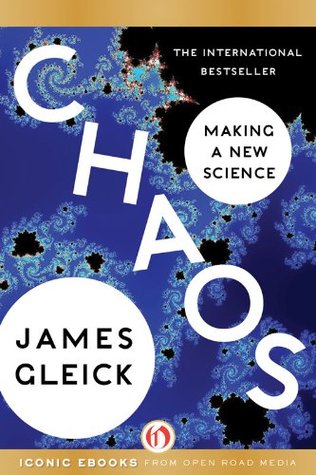More on this book
Community
Kindle Notes & Highlights
Enrico Fermi once exclaimed, “It does not say in the Bible that all laws of nature are expressible linearly!” The mathematician Stanislaw Ulam remarked that to call the study of chaos “nonlinear science” was like calling zoology “the study of non elephant animals.”
deterministic disorder.
Yasha Sinai,
Without help from cues such as haziness, a cloud twenty feet away can be indistinguishable from two thousand feet away. Indeed, analysis of satellite pictures has shown an invariant fractal dimension in clouds observed from hundreds of miles away.
What is turbulence then? It is a mess of disorder at all scales, small eddies within large ones. It is unstable.
It is motion turned random.
The Landau picture is a piling up of competing rhythms. When more energy comes into a system, he conjectured, new frequencies begin one at a time, each incompatible with the last, as if a violin string responds to harder bowing by vibrating with a second, dissonant tone, and then a third, and a fourth, until the sound becomes an incomprehensible cacophony.
He saw the other-worldly light that shines from a vapor, any vapor, near the critical point, the light called “opalescence” because the soft scattering of rays gives the white glow of an opal.
Ruelle played with chemistry sets, or not quite sets in the later American sense, but chemicals, explosive or poisonous, cheerfully dispensed in his native northern Belgium by the local pharmacist and then mixed, stirred, heated, crystallized, and sometimes blown up by Ruelle himself.
Why should it be that as things become small they also become incomprehensible?
To edit a line of a program meant pressing Return and waiting while the terminal hummed incessantly and the central computer played its electronic round robin with other users across the laboratory.
His diet was strictly coffee. (Even when healthy and at peace, Feigenbaum subsisted exclusively on the reddest possible meat, coffee, and red wine. His friends speculated that he must be getting his vitamins from cigarettes.)
A mathematical discovery was understood by mathematicians, a physics discovery by physicists, a meteorological discovery by no one.
Apart from D’Arcy Thompson, not many modern biologists had pursued the undeniable unity of living organisms. “Few had asked whether all the patterns might be reduced to a single system of generating forces,” as Gould put it. “And few seemed to sense what significance such a proof of unity might possess for the science of organic form.”
When biology finally broached the interior workings of sinuses, retinas, nerves, brain tissue, it became unamusingly quaint to care about the shape of the skull.
peculiar property
Shaw’s 1959 Ford ranch-style station wagon, an automobile known as the Cream Dream.
Huberman, a dapper black-haired Californian transplanted from Argentina,
Treating such disorders, he and other physiologists suggested, may depend on broadening a system’s spectral reserve, its ability to range over many different frequencies without falling into a locked periodic channel.
The Second Law is one piece of technical bad news from science that has established itself firmly in the nonscientific culture. Everything tends toward disorder.
However expressed, the Second Law is a rule from which there seems no appeal. In thermodynamics that is true. But the Second Law has had a life of its own in intellectual realms far removed from science, taking the blame for disintegration of societies, economic decay, the breakdown of manners, and many other variations on the decadent theme. These secondary, metaphorical incarnations of the Second Law now seem especially misguided.
Thoughtful physicists concerned with the workings of thermodynamics realize how disturbing is the question of, as one put it, “how a purposeless flow of energy can wash life and consciousness into the world.”


